Tshechu in the Dzong
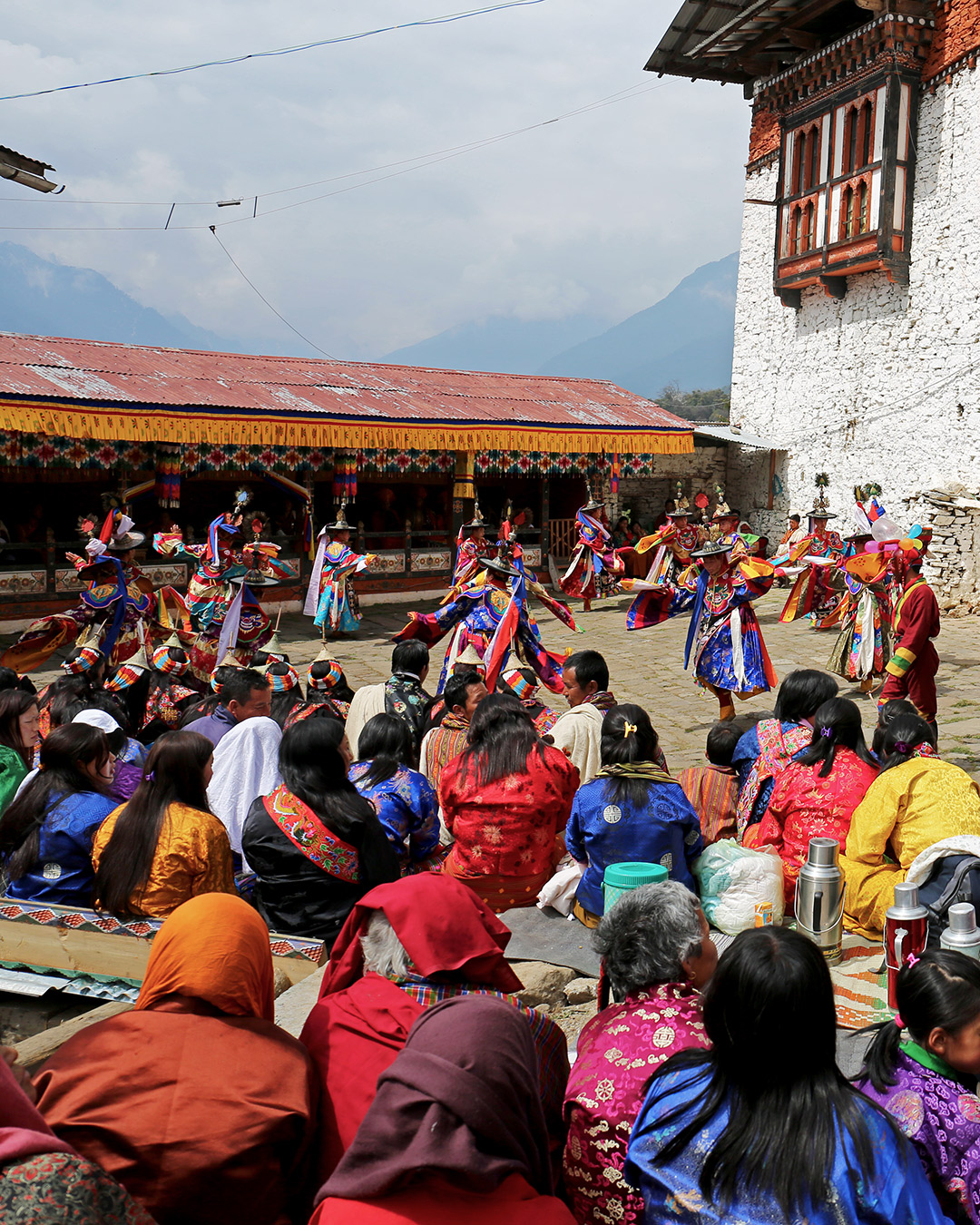
Religious ritual and culture are embedded in the minds of the Bhutanese, reinforced through structures built into the countryside. ChortensChorten or Stupa is an important religious monument in Buddhism, symbolizing Buddha’s presence. It also holds precious Buddhist relics and sometimes even preserved bodies of renowned lamas. Read more about Chortens on Tibetpedia Read more about Chortens in Bhutan in this article in the Bhutanese Daily BBS. More and white prayer flags as memories of those now gone, mani walls a wall made of stones inscribed with a Lamaist prayer along religious paths to be circumambulated in ritual, prayer wheels to be turned in every other village – not to mention the various temples, monasteries and dzongsDzongs are the fortress-monasteries of Bhutan and Tibet. The presence of Dzongs across the country symbolizes unification and the recognition of a central authority by the people in the region. Read More which dot the landscape – all embody the ritualistic experience.
For those living under the protection of the Wangdue dzongDzongs are the fortress-monasteries of Bhutan and Tibet. The presence of Dzongs across the country symbolizes unification and the recognition of a central authority by the people in the region. Read More, the annual TshechuTshechu is a religious festival meaning “tenth day” held annually in various temples, monasteries and dzongs throughout the country. Tshechus are grand events where entire communities come together to witness religious mask dances, receive blessings and socialize. In addition to the mask dances, tshechus also include colorful Bhutanese dances and other forms of entertainment. https://en.wikipedia.org/wiki/Tshechu celebration was an inherent part of life. For Gyelmo as a child, the TshechuTshechu is a religious festival meaning “tenth day” held annually in various temples, monasteries and dzongs throughout the country. Tshechus are grand events where entire communities come together to witness religious mask dances, receive blessings and socialize. In addition to the mask dances, tshechus also include colorful Bhutanese dances and other forms of entertainment. https://en.wikipedia.org/wiki/Tshechu at the dzongDzongs are the fortress-monasteries of Bhutan and Tibet. The presence of Dzongs across the country symbolizes unification and the recognition of a central authority by the people in the region. Read More was seen as a time for fun, for an opportunity to dress up in pretty clothing and spend time with her friends. As an adult, her perception of the festival has changed. She enjoys it as a social event, an opportunity to see family and friends she has moved away from, and also feels a connection to its religious aspects. She attends the TshechuTshechu is a religious festival meaning “tenth day” held annually in various temples, monasteries and dzongs throughout the country. Tshechus are grand events where entire communities come together to witness religious mask dances, receive blessings and socialize. In addition to the mask dances, tshechus also include colorful Bhutanese dances and other forms of entertainment. https://en.wikipedia.org/wiki/Tshechu faithfully each year, either at Thimphu or back at Wangdue, accompanied by her children or friends.
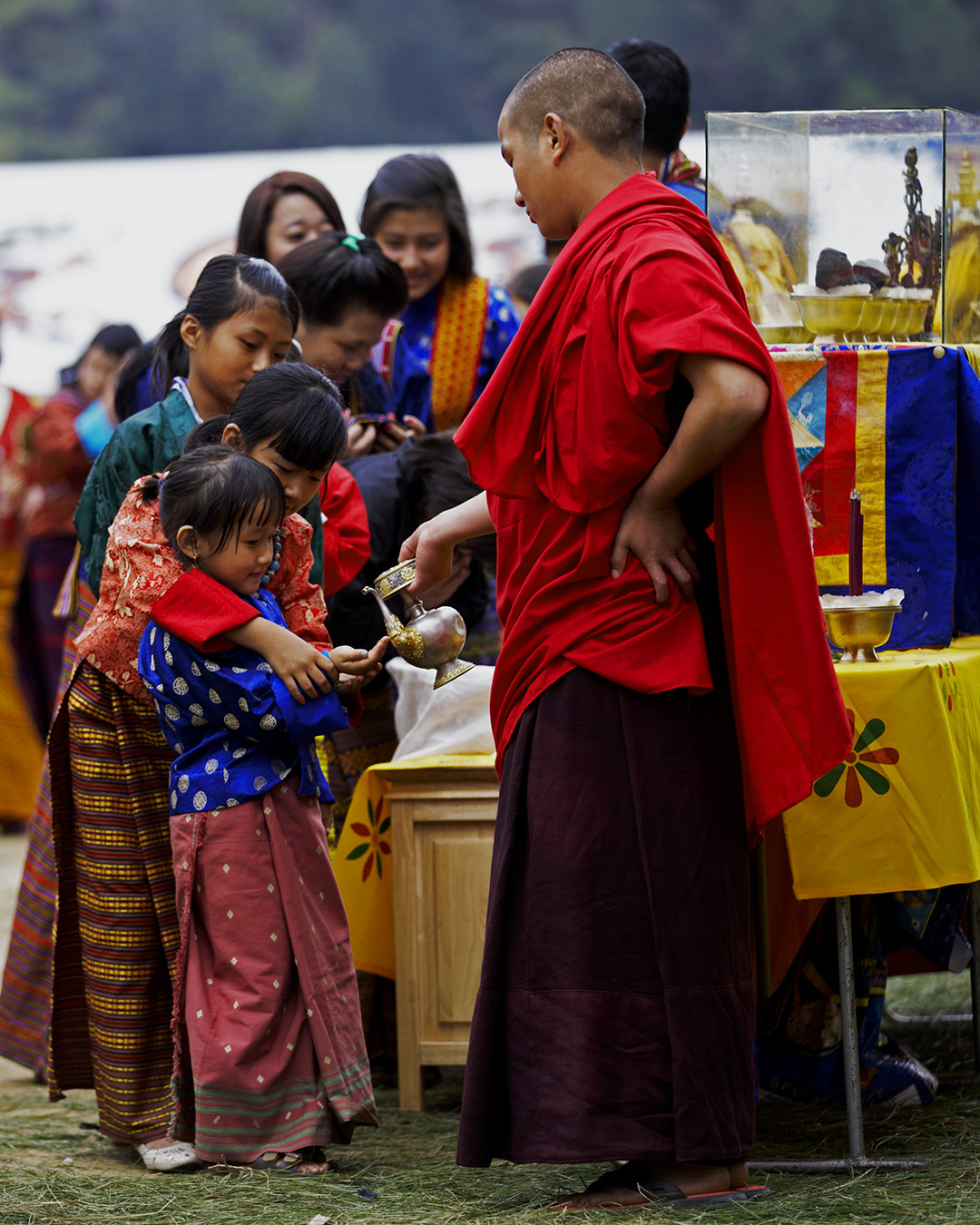
The heart of the TshechuTshechu is a religious festival meaning “tenth day” held annually in various temples, monasteries and dzongs throughout the country. Tshechus are grand events where entire communities come together to witness religious mask dances, receive blessings and socialize. In addition to the mask dances, tshechus also include colorful Bhutanese dances and other forms of entertainment. https://en.wikipedia.org/wiki/Tshechu is the chaamThe cham dance (Tibetan: འཆམ་, Wylie: ‘cham)[2][3] is a lively masked and costumed dance associated with some sects of Tibetan Buddhism and Buddhist festivals. The dance is accompanied by music played by monks using traditional Tibetan musical instruments. The dances often offer moral instruction relating to karuṇā (compassion) for sentient beings and are held to bring merit to all who perceive them. https://en.wikipedia.org/wiki/Cham_dance…, a ritual Buddhist dance. The Bhutanese believe that watching these sacred dances lets them attain a higher spiritual plane. The dances are said to have originated with Guru RinpochePadmasambhava, also called Guru Rimpoche, Tibetan Slob-dpon (“Teacher”), or Padma ‘Byung-gnas (“Lotus Born”), (flourished 8th century), legendary Indian Buddhist mystic who introduced Tantric Buddhism to Tibet and who is credited with establishing the first Buddhist monastery there., who was himself a tantric and understood the power of movement. Many of the dances depict stories of myths and legends that persist to this day. At first glance the dances themselves are repetitive, but they grow hypnotic when watched over a long time. The trance-like rhythm of the dancers follows an arrangement of percussion instruments, pierced by the notes of a trumpet like instrument. Dressed in elaborate costumes and headgear, they move in unison, their pace steadily picking up to end in a crescendo. Most of the dances follow this pattern, and are rituals to be observed rather than participate in.
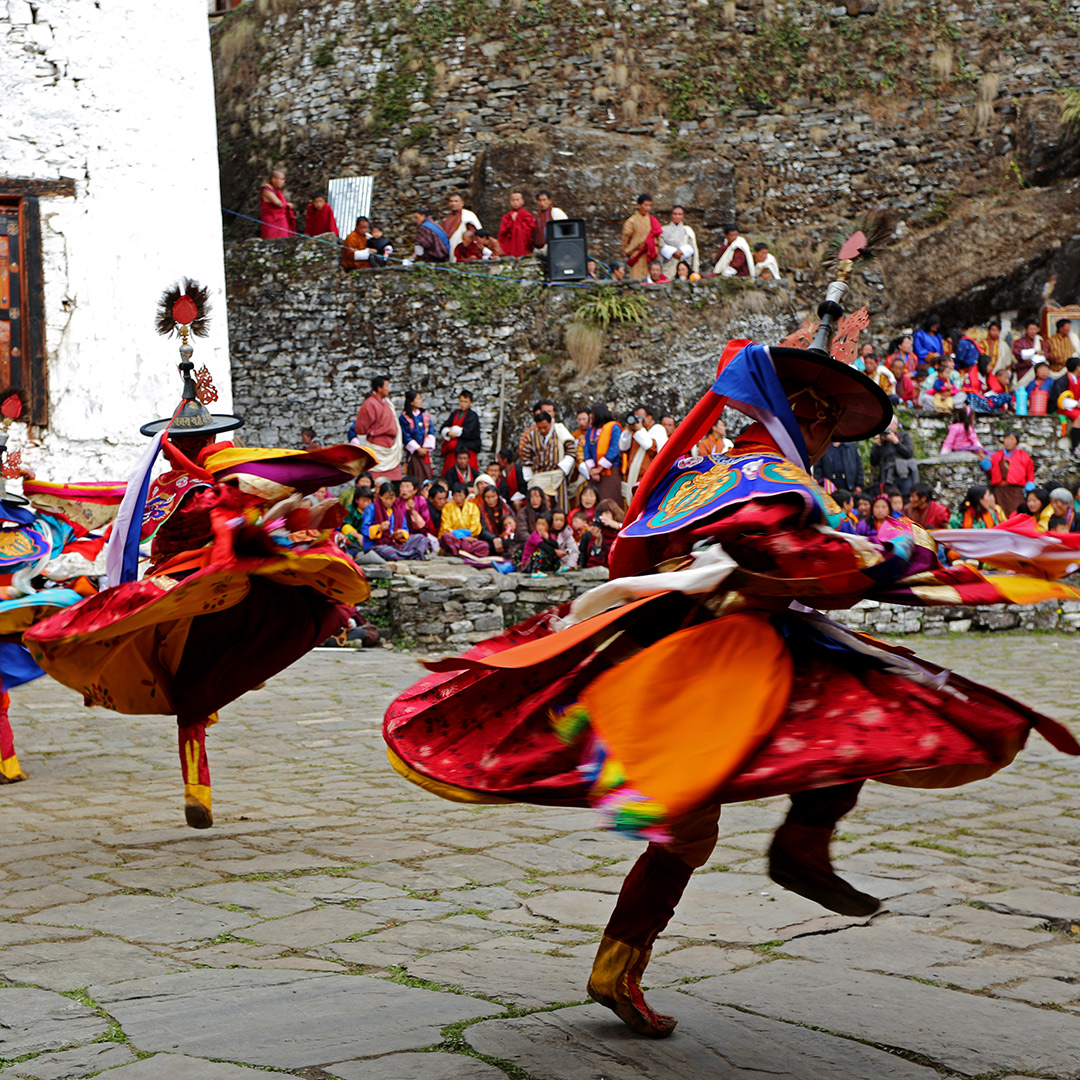
The courtyard of the dzongDzongs are the fortress-monasteries of Bhutan and Tibet. The presence of Dzongs across the country symbolizes unification and the recognition of a central authority by the people in the region. Read More receives the crowd for the TshechuTshechu is a religious festival meaning “tenth day” held annually in various temples, monasteries and dzongs throughout the country. Tshechus are grand events where entire communities come together to witness religious mask dances, receive blessings and socialize. In addition to the mask dances, tshechus also include colorful Bhutanese dances and other forms of entertainment. https://en.wikipedia.org/wiki/Tshechu, all of them dressed in their best. The balconies at every level of the dzongDzongs are the fortress-monasteries of Bhutan and Tibet. The presence of Dzongs across the country symbolizes unification and the recognition of a central authority by the people in the region. Read More are lined with faces watching the chaamThe cham dance (Tibetan: འཆམ་, Wylie: ‘cham)[2][3] is a lively masked and costumed dance associated with some sects of Tibetan Buddhism and Buddhist festivals. The dance is accompanied by music played by monks using traditional Tibetan musical instruments. The dances often offer moral instruction relating to karuṇā (compassion) for sentient beings and are held to bring merit to all who perceive them. https://en.wikipedia.org/wiki/Cham_dance…, mesmerized by the swirls of red-clad monks. The movements make them seem almost part of the architecture, and the sounds of bells, whips and mani wheels complete the experience. Food is carried in picnic baskets, and meals are eaten in the grounds of the dzongDzongs are the fortress-monasteries of Bhutan and Tibet. The presence of Dzongs across the country symbolizes unification and the recognition of a central authority by the people in the region. Read More. The power of belief and ritual still brings huge crowds to the dzongDzongs are the fortress-monasteries of Bhutan and Tibet. The presence of Dzongs across the country symbolizes unification and the recognition of a central authority by the people in the region. Read More, and it is typical to see visitors taking blessings from the monks, worshipping at the temples inside and catching up with family from around the country. Even with an imposing edifice, the dzongDzongs are the fortress-monasteries of Bhutan and Tibet. The presence of Dzongs across the country symbolizes unification and the recognition of a central authority by the people in the region. Read More creates meaningful public space in its details.
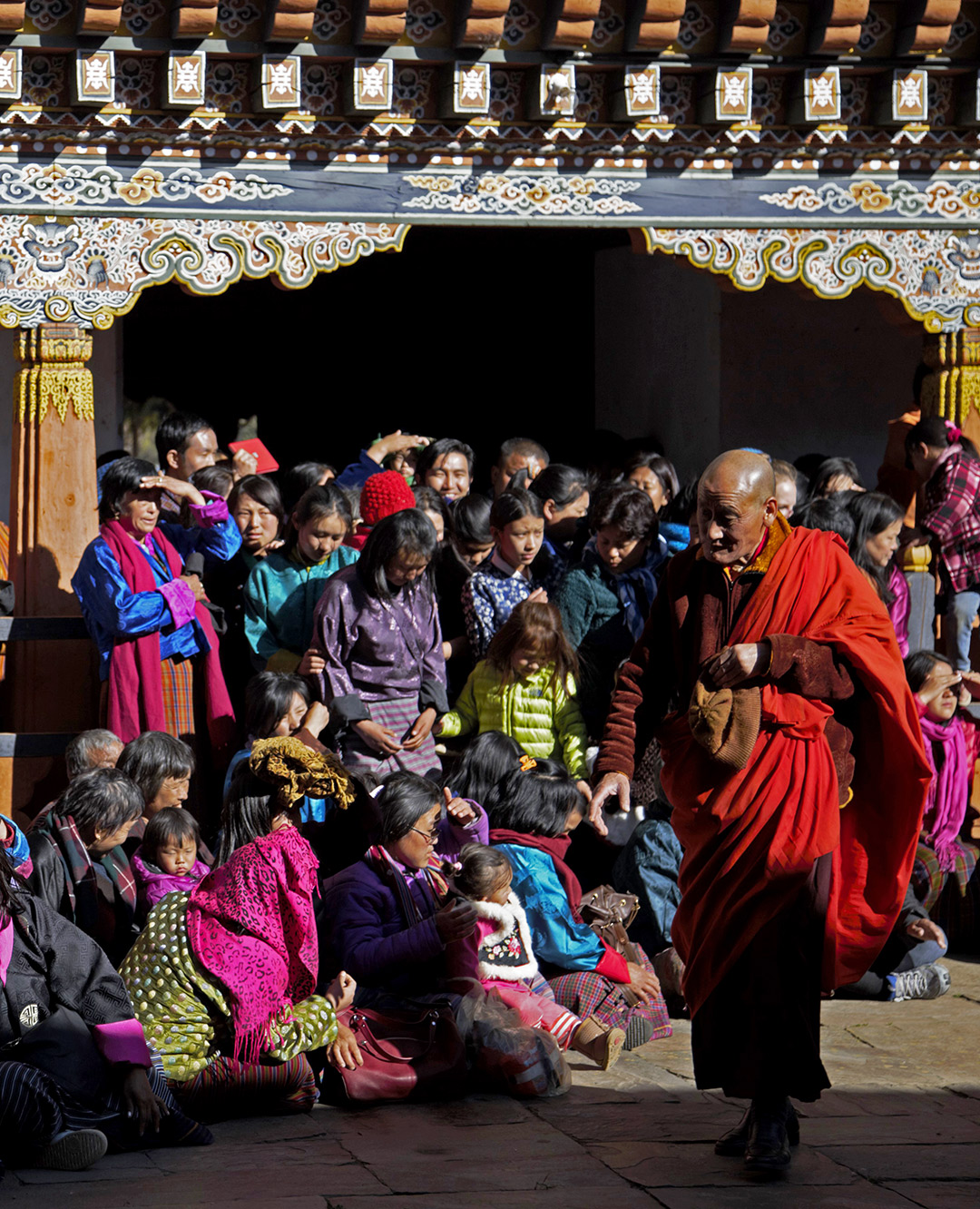
Gyelmo takes her three children to the Tsechu to share this essence and culture with them, and hopes that they will value it as she does. The Tsechus at the dzongsDzongs are the fortress-monasteries of Bhutan and Tibet. The presence of Dzongs across the country symbolizes unification and the recognition of a central authority by the people in the region. Read More are still the formal gathering events for the Bhutanese, whether in the village or the town. It remains to be seen how much relevance they will hold for the generations to come. Will the Tsechus adapt to the newer culture creeping into Bhutan, or will they become tourist attractions, merely generating revenue while ceasing to hold meaning for the young people of Bhutan?
Vignettes

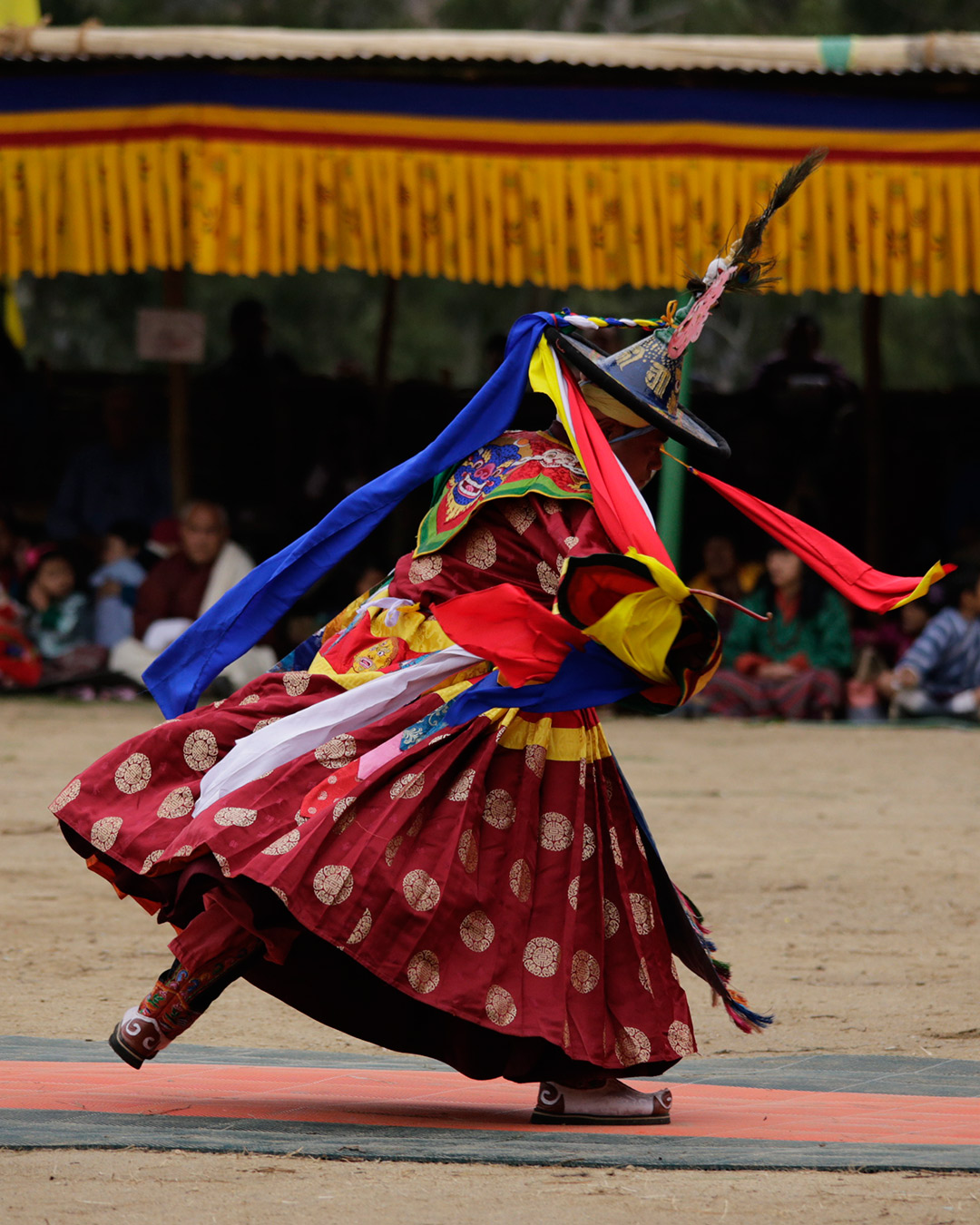
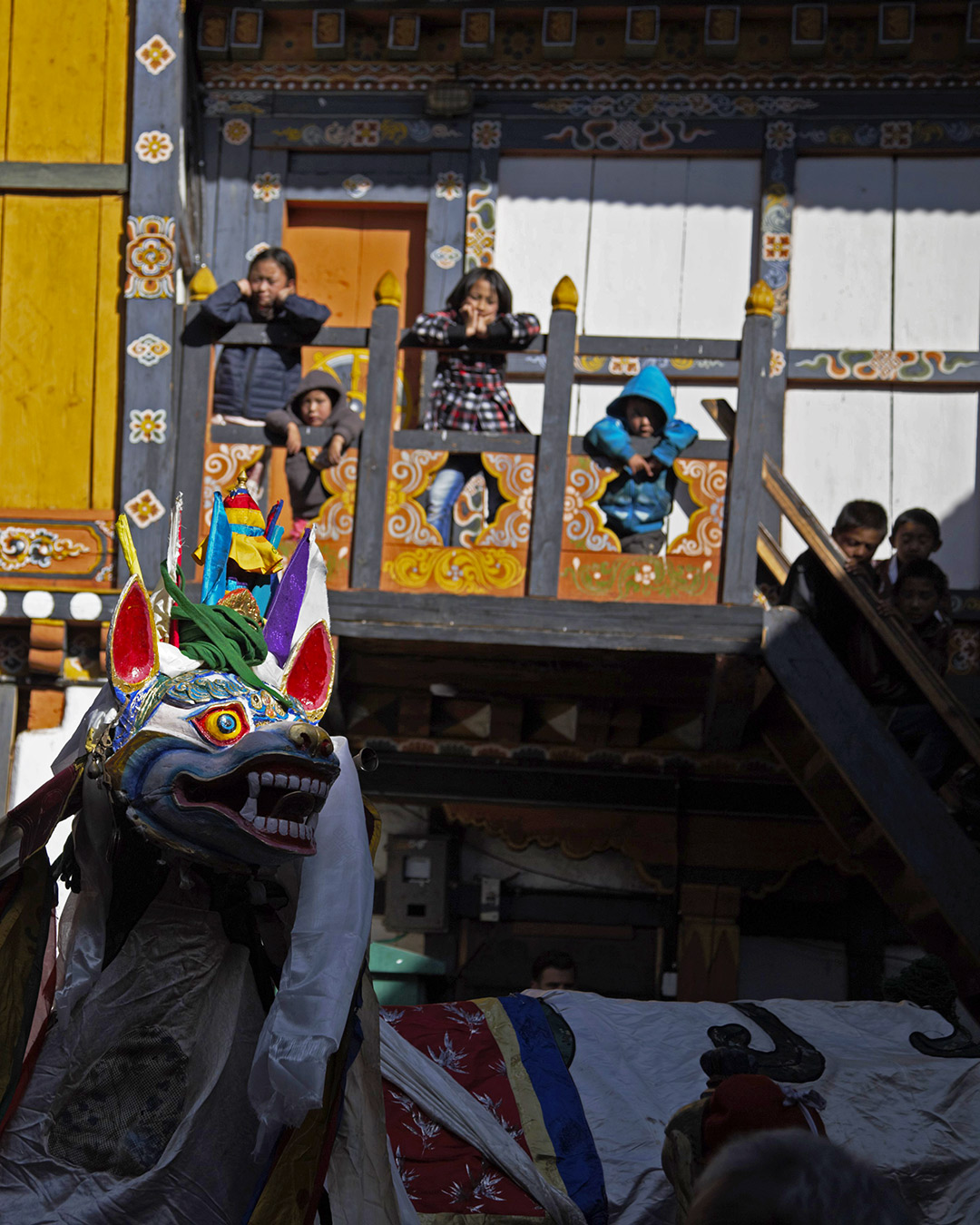

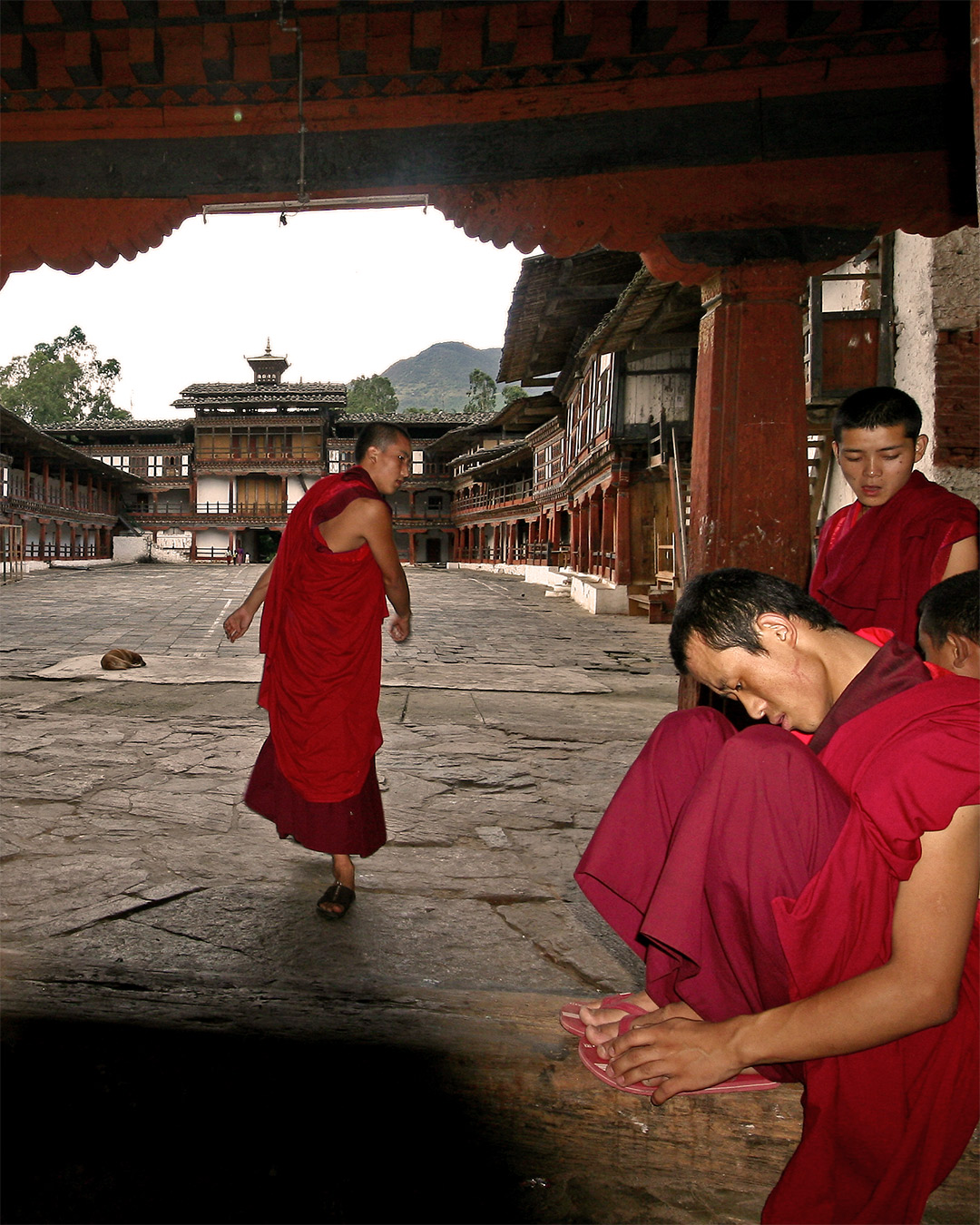
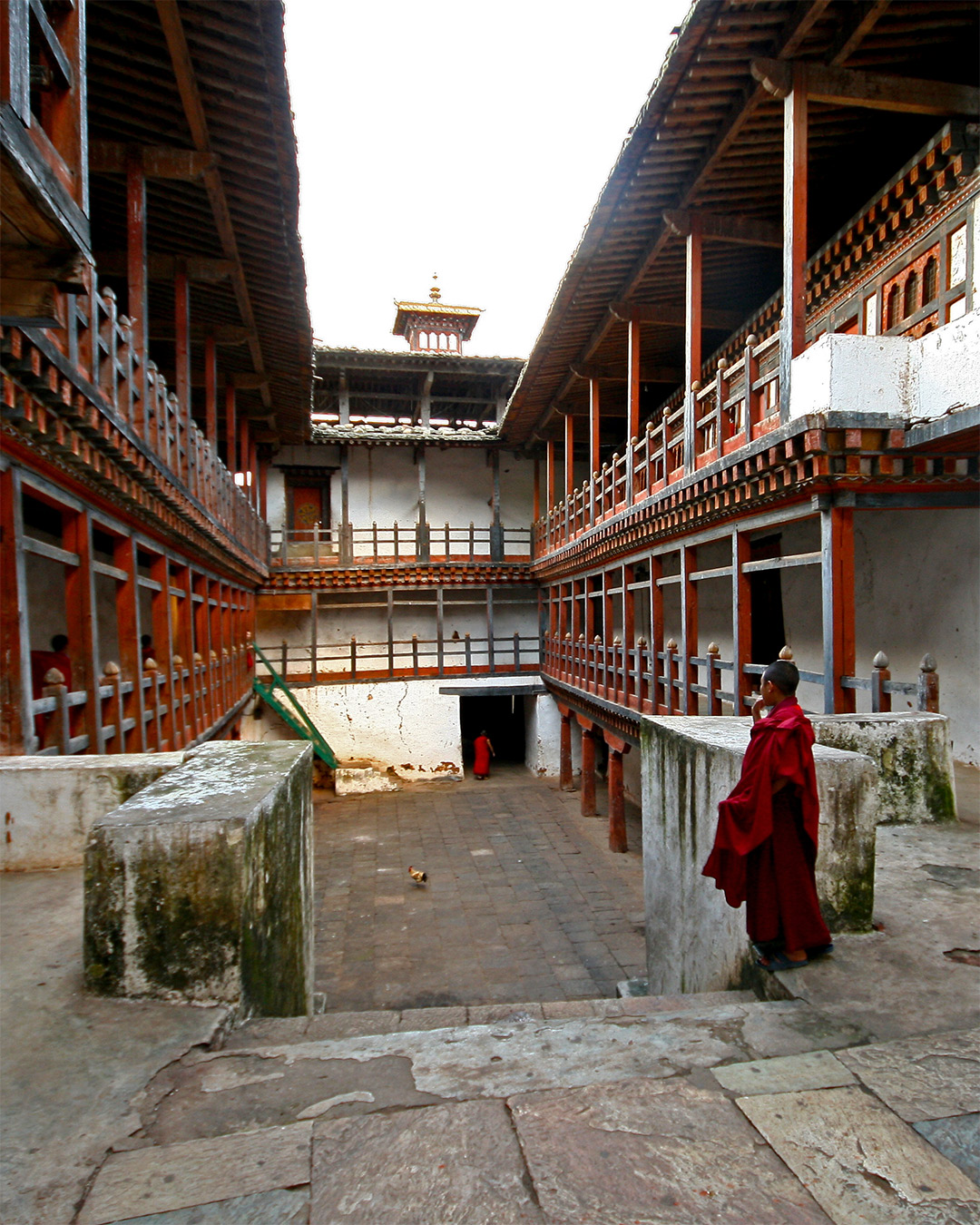
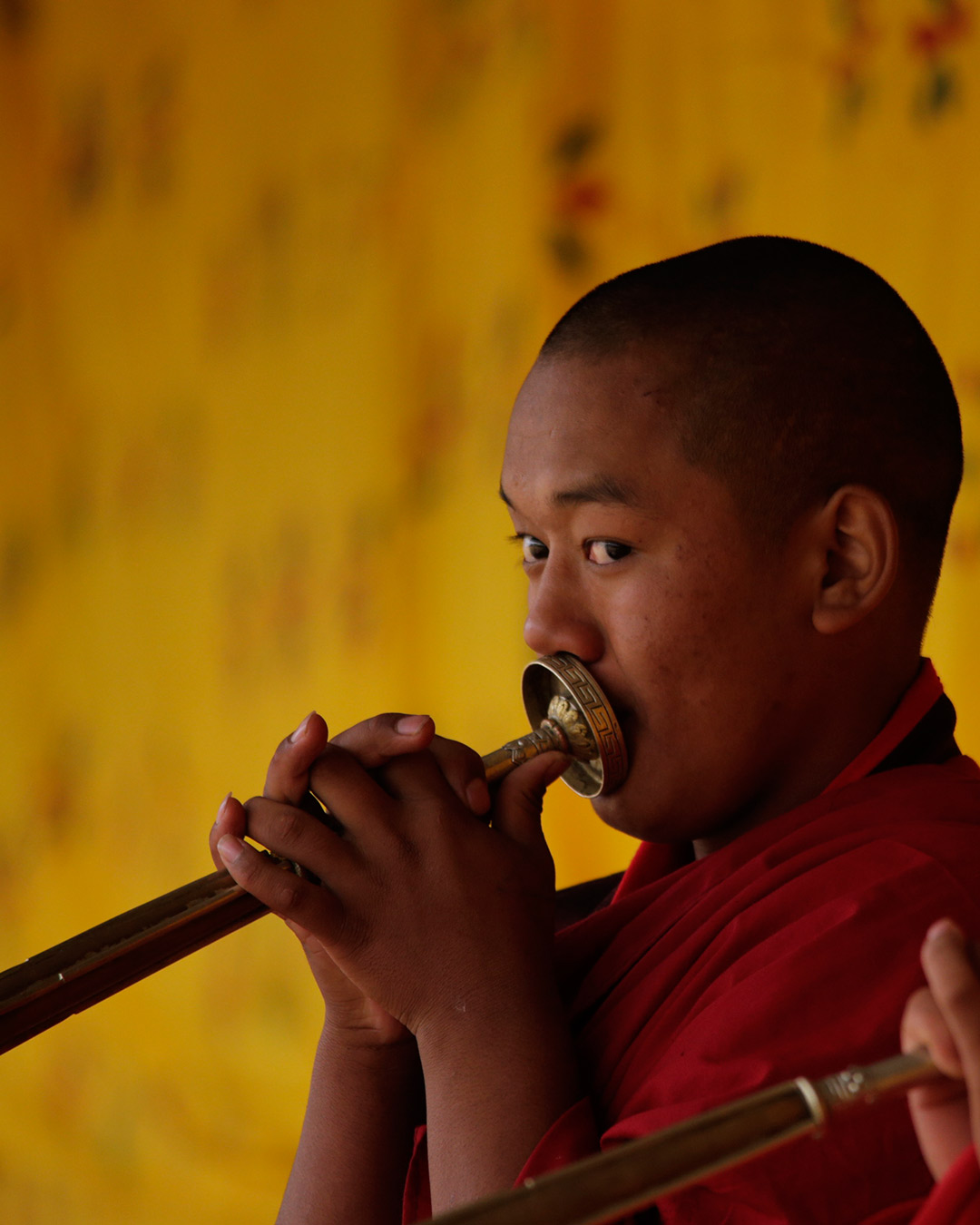
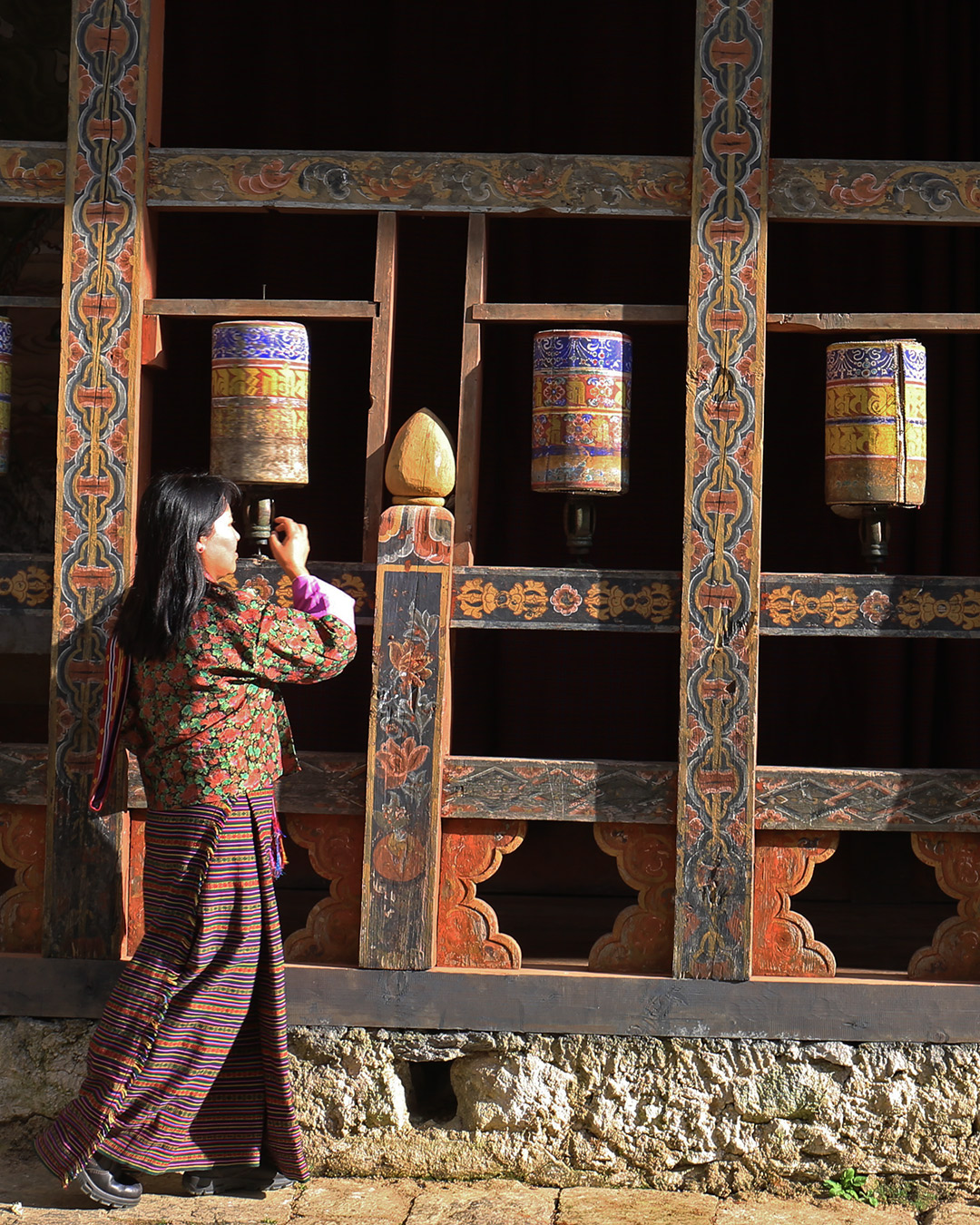
Truly wonderful stories, Natasha! I thoroughly enjoyed reading all of these. You must have taken very detailed notes during your trips, and such beautiful photographs too! Have you thought of writing a more detailed travelogue on Bhutan? Many Thanks for this, and I look forward to more! Sandeep